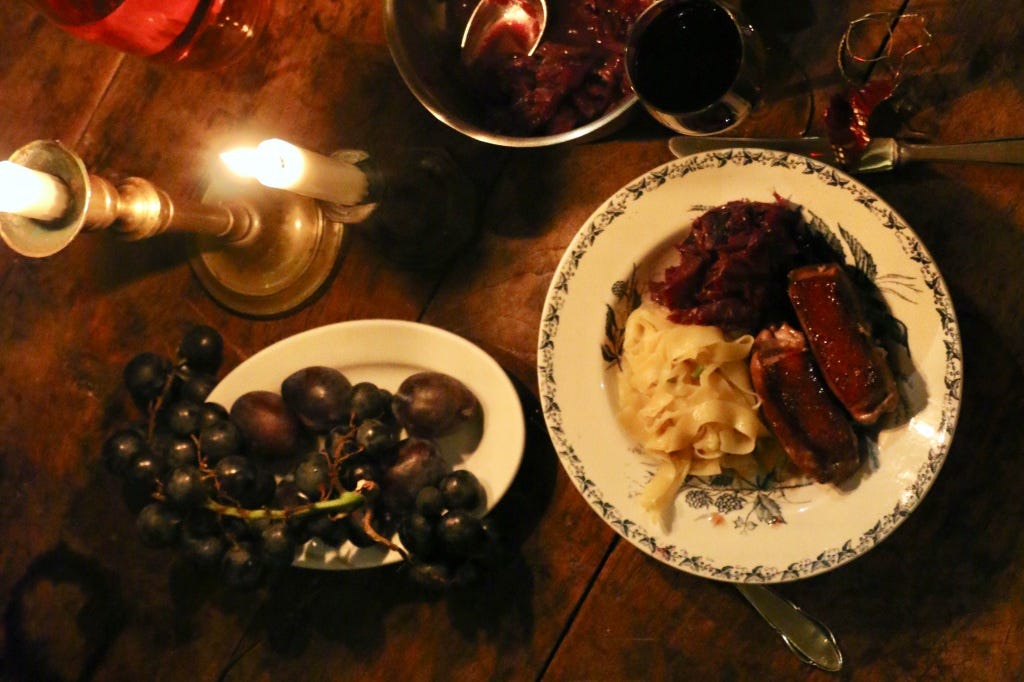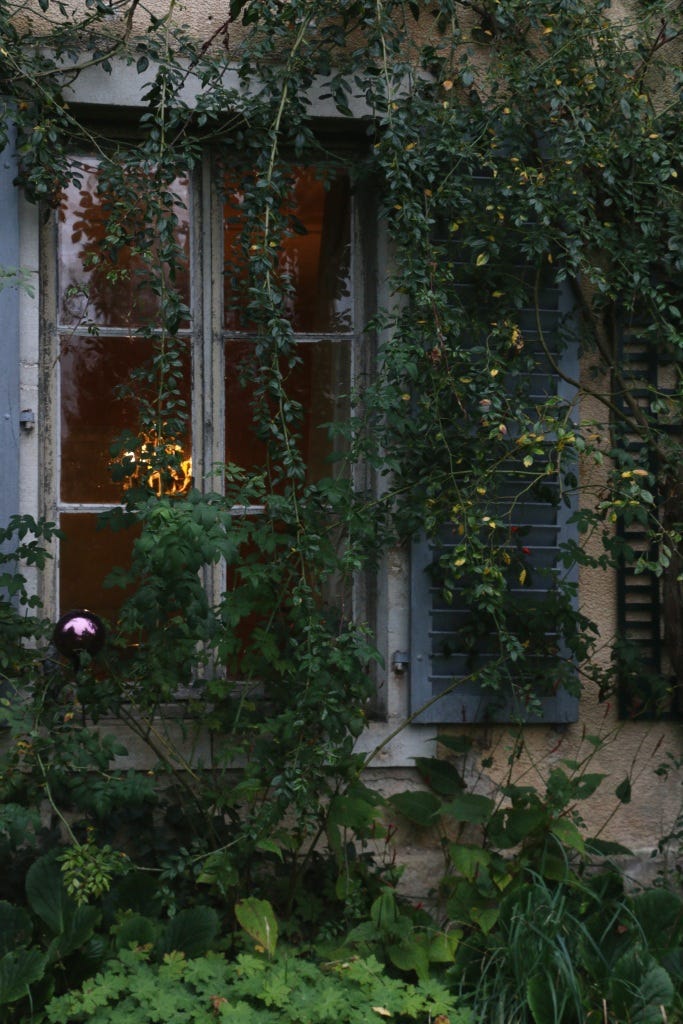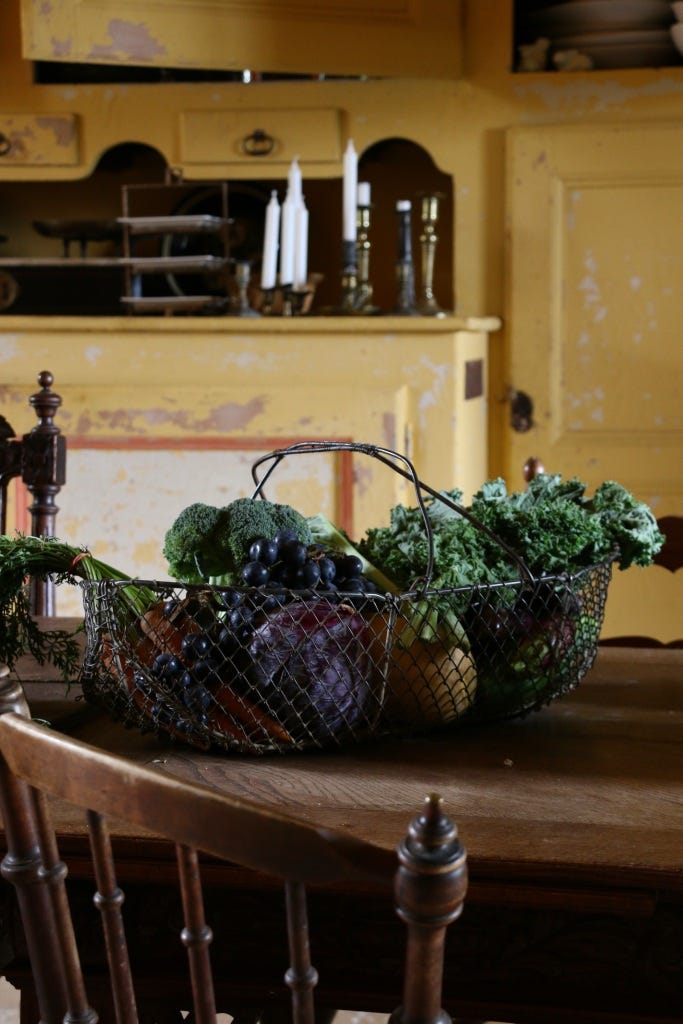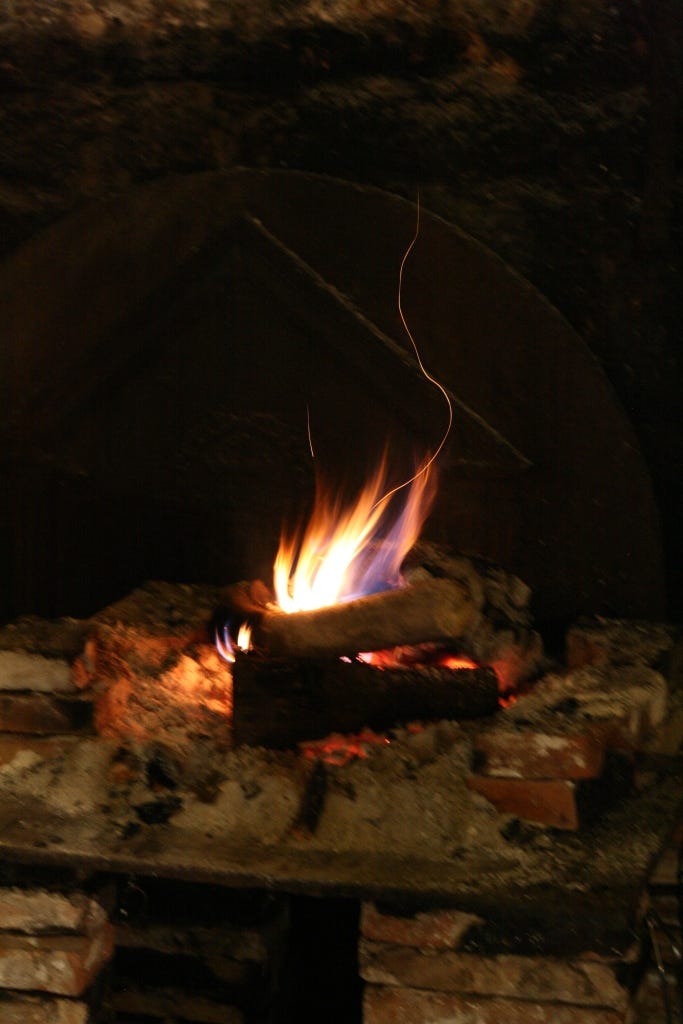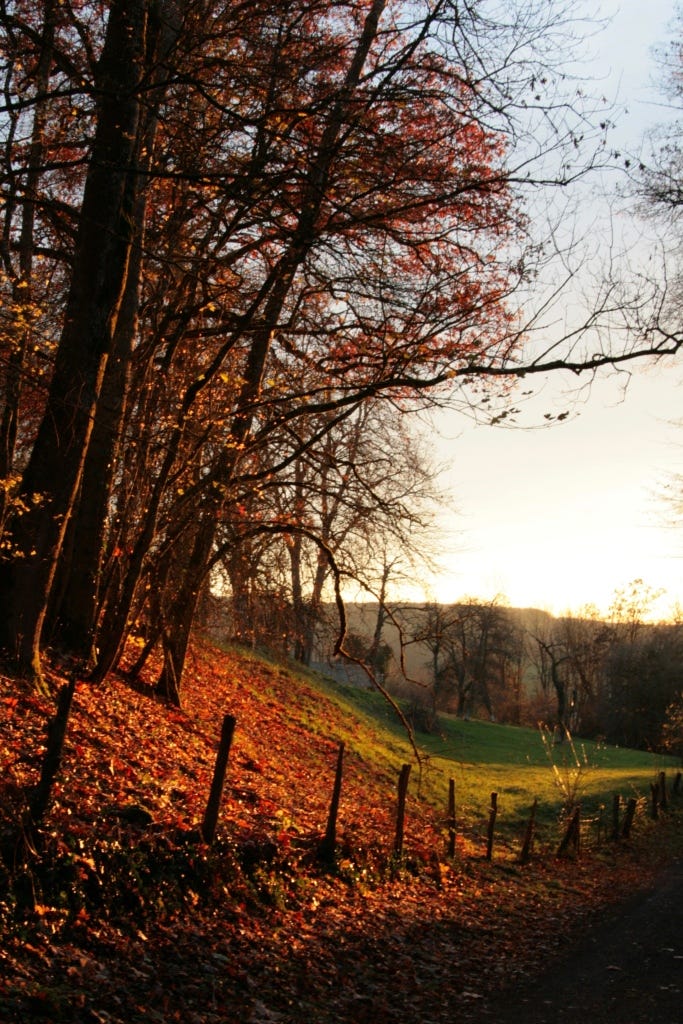Autumn at the Castle and Magret de Canard
Autumn has safely arrived at the castle and I can't say I'm disappointed, so far it's given us a splendid show of dramatic weather, torrential rain followed by golden sunsets, crisp and misty mornings and watery light flowing in through the kitchen window. We're now having the wood fired stove going all the time, which is fairly early for this time of the year, but then we're well stocked up on wood and not yet tired of carrying logs.
There's a definite turn in the kitchen too, given the weather, it's now all about rich and savoury food. A great deal of raclette, also big loads of mushroom and cream on toast. Pumpkin soup and roast potatoes. The other day I cooked a duck breast and some red cabbage with apples for a bunch of strong men, followed by mousse au chocolat with griottines. Besides hosting and accommodating guests, we've been very busy with restorations in the past weeks, hard work that makes for a healthy hungry stomach.
The secret to cooking duck breast is to slow cook it on its thick fat skin so the grease melts and then you spoon the fat over the sizzling meat all the time. Also, and probably unusual to the customs many of my readers, duck breast is supposed to be eaten rosé, very juicy inside.
But back to the strong men, first of all we put in the antique marble fireplace in our sleeping room. We've found it nearby a while ago, call us lucky, or maybe we've been just in the flow, anyhow it's like with the tiled stove down in the dining room, now it's in, we're slightly disappointed because it blends in so well that we don't even have to get used to it. In the coming weeks, we'll install the fireplace insert with the original cladding, beautiful white glazed tiles with gilt ornaments, which will be very tricky. So here's to restoring a fireplace. And because it's so easy (there's a good deal of sarcasm in here), we decided to also replace the one in the future winter parlour. Of course, as it goes, we found the perfect one within a stone's throw (call this bit a fairy tale of castle restoration), it'll go in later this year. By then it will be wild boar fillet and pâté.
I furthermore laid bare the last layer of wallpaper in the sleeping room and did some checks on all walls, so far it doesn't look like big parts are missing, which is another lucky turn, and we'll definitely strip off the rest in the future to see if we get it clean enough to look good. So far we've moved back in and I can't leave off tearing down odd bits and scraps, especially when I don't want to go to bed, which makes my husband quite mad.
Over the coming weeks it's mainly going to be works in the park and some more road trips sourcing materials, which equally means scouting out the homeliest countryside inns and eat and drink very well. I'll share more of that via my instagram.
What you'll need
A nice duck breast (I roughly count a half a breast per person, generously rounding up if in doubt)
0.5dl of fig liqueur
A table spoon of butter
Half a red cabbage
One apple
One big purple onion, chopped into little cubes
3-4 juniper berries
Sea salt and pepper for seasoning
A portion of homemade pasta (I'm lucky enough to be able to resort to a nearby farm who makes really good nouilles when I don't have the time at hand to make my own)
A bouquet of parsley, grossly chopped
How you cook it
Start with the red cabbage. This usually takes about an hour of cooking time but the longer you cook it the better and also easier to digest. You may as well prepare this a day ahead. Chop the cabbage into thin stripes and stir fry with the butter in a wide pan. Add the chopped onion and the juniper berries, continue frying for a couple of minutes, then grape the apple and add. The cabbage should cook in its own juice but in case you think it needs more liquid for cooking, add a dash of vin jaune. Season with salt and pepper once it's done.
Put the duck breast in a frying pan with its skin down and put on low to medium heat. With the help of a spoon, sprinkle regularly with the melting duck fat. Sizzle for about 12-15 minutes. While the duck is cooking, bring water to boil with a little bit of salt for the pasta. When the duck fat has melted away and the bottom side is crispy and golden, carefully pour the duck fat in a separate container. Then increase the heat and brown the top side for another 3-5 minutes. When the duck breast is done, season with sea salt and pepper and wrap in tin foil and keep in a warm spot for at least 5 minutes. Deglaze the residue in the pan with the fig liqueur and immediately take off the heat and whisk with a hand whisk.
Warm the plates. Add half the duck fat to the red cabbage.
Cook the pasta, with homemade pasta this takes about 3-4 minutes. Strain but keep a bit of cooking water. Put the pasta back into the pan with the half the duck fat and add the chopped parsley, add some of the cooking water and carefully mix. If the duck breast has drawn juice in its tin foil pyjama, add this to the fig liqueur sauce.
Cut the duck breast into thin slices about half a centimetre thick and arrange with the red cabbage and the pasta on a nice plate. Sprinkle with fig liqueur sauce and immediately serve.
How you eat it
This is a choice autumn or even winter dish, pairing perfectly well with late year fruits and vegetables, such as quince, apples, cabbages or pumpkin. The night I cooked this for us, there was a storm raging outside tearing off ever so many leaves of the big linden tree next to the tower, blowing occasional gusts down the big old fireplace. That would be the perfect atmosphere for such a meal yet, granted, it goes very well in a cosy kitchen too, with some beeswax candles lit and a glass of velvety red burgundy.




